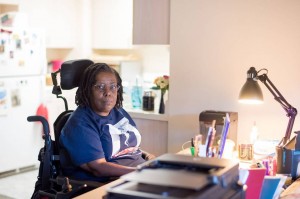New Health Programs for Elderly Poor Make Rocky Start
< < Go Back
Enrollment falls short of expectations, as patients prove reluctant to switch.
A federal experiment to curb health spending and improve care for disabled and elderly poor people is off to a rocky start, with enrollment falling short of expectations as patients prove reluctant to switch to the new programs.
The struggles experienced by the pilot plans, which aim to streamline care for people who qualify for both Medicare and Medicaid, come despite a growing national urgency about caring for the aging impoverished. The push to simplify their coverage through the Affordable Care Act received rare bipartisan support.
States and the federal government spend roughly $300 billion a year treating the at least 10.7 million people on both Medicare and Medicaid, according to the Centers for Medicare and Medicaid Services. The number of Americans 65 and older living in poverty was 4.6 million in 2014, up nearly 30% from 2010, Census figures show.
Thirteen states, including California, Ohio and New York, reached agreements with CMS under the 2010 federal health law to develop programs that would better care for these needy and expensive patients while saving the health system money, in part by keeping more people out of nursing homes. Medicare covers the elderly and disabled and Medicaid covers the poor.
The programs typically enroll “dual eligible” patients—people who qualify for both Medicare and Medicaid—in one plan covering all of their care, rather than leaving them to figure out the rules of the two programs separately.
The latest data show enrollment in nine states where numbers are closely tracked—including California, which has the biggest duals program—stood at about 371,000 as of Dec. 1, marking a third straight month of modest declines. A recent CMS tally of all 12 states showed only about 34% of the nearly 1.4 million eligible people have joined the programs, much lower than expected, according to insurers, analysts and state officials.
Dual-eligible patients are some of the most expensive on government insurance and more likely than those on either Medicare or Medicaid to have mental illness or chronic conditions. With two forms of coverage, they might see doctors who don’t work together, which can mean poor care and high costs.
The experimental programs generally require a social worker’s or nurse’s health assessment, by phone or in person, of the patient. From there, coordinators, who in some cases are nurses, step in to help a patient figure out how to get care under a coordinated plan.
Despite such benefits, many on Medicare and Medicaid have been reluctant to change. Some fear they might lose the network of doctors they worked hard to assemble, or are happy with the coverage they have.
“I don’t really want to start over,” said Bertha Poole, a 63-year-old quadriplegic in Long Beach, Calif., who is on both Medicare and Medicaid, which cover visits with medical specialists and in-home help. She opted out of joining the duals program after receiving three letters from a state agency telling her she would be automatically enrolled.
More From The Wall Street Journal (subscription required):




